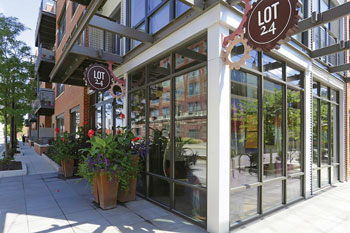
There is currently a 90 percent occupancy rate in the neighborhood. Average rental prices range from $1,636 for a studio up to $2,667 for a two-bedroom; these rental rates are considered to be some of the most expensive in Pittsburgh, in part due to limited development activity. The “State of the Strip” report indicates that more affordable rental units will be built in the future.
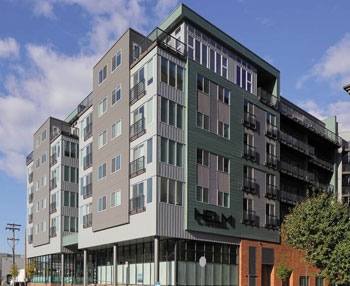
“The demand seems to be for larger rather than smaller units, a flip since Covid. A one-bedroom used to fly off the market, and now they want bigger and bigger spaces,” says Laura Kingsbury, a real estate professional with New City.
This old-new neighborhood consists of both adaptive reuse projects as well as new construction, including additions to existing buildings. Housing options in the Strip are primarily condos and townhouses rather than single-family homes.
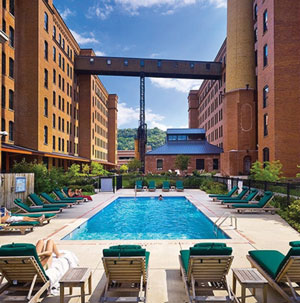

As for the Strip’s residential housing options, home prices have increased as the demand for housing in this neighborhood has skyrocketed. Still, says Friedman, “in comparison to some other cities, it is thought of as an affordable location.”

As for those choosing to make the Strip their home, the neighborhood has attracted a wide demographic over the years, with people moving in from out of town and from other parts of Pittsburgh. The only demographic that is underrepresented is young families, which perhaps is due to an absence of schools and parks in the immediate area. Friedman says that the common denominator for new Strip residents is that they are seeking a specific lifestyle—people attracted to a vibrant, walkable neighborhood that is close to the city and that features a plethora of shopping and eating options. An issue that concerns potential buyers is the scarcity of parking spaces/garages and lack of public transportation, though some walk, bike, or use ride shares to work. Jobkar says that a number of residents are first-time home buyers but can also be empty nesters who left big homes in the suburbs.
Kingsbury predicts that the Strip will continue to grow, and that the area of streets between the Strip and Lawrenceville constitutes a prime section for the next wave of development.
The first wave of Strip District residents represents a wide-ranging demographic of people from all over the city, most of whom moved here for the convenience and vibrancy of the neighborhood. Some of their stories follow.
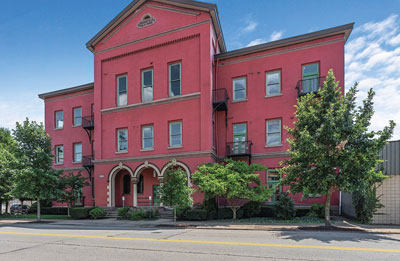
Seana Armstrong, 28. Armstrong is a pharmacist and moved to the Strip because she wanted to be close to her job at Hieber’s Pharmacy in The Terminal. She moved from Oakland, and when her lease was up, she decided that you can’t beat a five-minute walk to work. In fact, Armstrong, who rents an apartment in the Cork Factory, does not own a car. To date, living in the Strip has been nothing but positive for her. “There are a lot of young people who live in my building. I think the social scene is huge, with many nice restaurants and bars, all of which are really walkable. It’s also close to Lawrenceville and Downtown, so if you want to shift neighborhoods a bit, it is still very accessible,” she says, adding that she feels it is a very safe neighborhood, and while it can be a bit noisy, it is nothing that is unmanageable. Armstrong just renewed her lease and says she can see herself staying in the area for some time to come.
Pamela Austin, 58. Austin moved here from Chicago a decade ago and moved to the Strip immediately, becoming one of the pioneers of the neighborhood from a residential standpoint. Austin is also the president and board chair of the Strip District Neighbors Association, an organization that promotes economic development while preserving the character of the neighborhood. “Our building is very quiet; it’s very peaceful and you don’t even feel you’re in the city,” says Austin, noting that many of the units in her building consist of people who are snowbirds—characterizing them as people who “really wanted something that was easier to take care of. They can shut down and go to Florida in the winters. Easy maintenance, but a very high-end product was attractive to them.” She also points to a lot of younger professionals. Austin is a firsthand witness to the neighborhood’s rapid growth, observing that the retail has really changed, with “Penn Avenue being the historic core and now supplemented heavily by Smallman Street, the Terminal Building, and 1600 Smallman.”
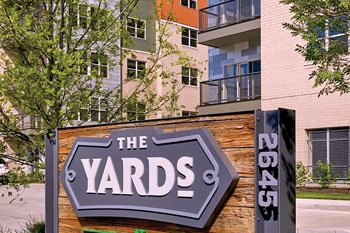
Camilo Caceres, MD, 42. Caceres, an emergency-room physician, moved to Pittsburgh for his residency in 2009 and lived on the North Side, visiting the Strip frequently. With his significant other, he moved into the Strip around 2014, initially renting at the Cork factory and eventually buying a condo a few years later. “At the time, there was not quite as much activity, but now there is so much to do. The feel of it was very noncorporate; it felt like it was all family-owned shops that had been there for decades,” he says. Caceres very much appreciates the walkability of the area, the ability to shop at many specialized shops, and the fact that the central location means that he has a short commute to work and is close to many other city neighborhoods.
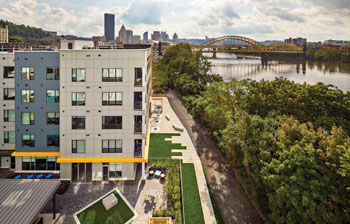
Susan Seletz, 62. After becoming empty nesters, Seletz and her husband moved back to Pittsburgh from Columbus in 2015, though they started looking at homes in 2014. “The Strip was not on our radar, but a friend who was an architect at the time suggested it; the only thing I knew about the Strip growing up here was Primanti’s,” says Seletz. The three-bedroom condo they bought was perfect for them, since their children were still in college at the time and they wanted them to feel like they had a home. Because they had lived in large cities, the main thing for them was the ability to walk to a lot of different Pittsburgh places, an aspect of Strip living that they certainly have taken advantage of, frequently walking to concerts and sporting events and even into Lawrenceville. In the past decade, Seletz has witnessed firsthand the growth of the neighborhood. “I always felt a degree of anonymity in living here, which I didn’t love, but that has definitely shifted in the last year or so,” she says.
Chris Hayner, 50. Hayner lived on the North Side for 15 years but decided he wanted new construction in a vibrant neighborhood that was bursting with retail investment; the Strip met those requirements. After moving here four years ago, he eventually transported his dental office from Downtown to the Strip as well. “I love it. I love the convenience to all the other neighborhoods. I love the new residential going in and the retail and I love the new restaurants,” he says. Echoing Laura Kingsbury’s comments, he believes that the Lawrenceville-Strip area between 10th and 50th streets eventually will turn into a metroplex, with a plethora of shopping, food, and entertainment options. Like many others, he appreciates the proximity to the Downtown amenities as well as the river trail, and even though he owns a car he values the fact that ride shares can be available to Strip residents within minutes.
Hilary Daninhirsch is an award-winning freelance writer who lives in the northern suburbs of Pittsburgh with her husband, two daughters, and two rescue dogs. She can be reached at hilarydaninhirsch.journoportfolio.com
